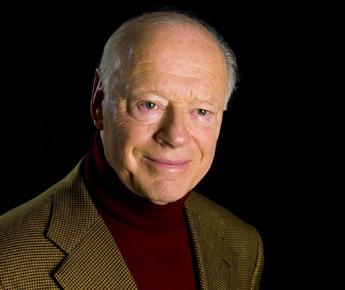Haitink, Boston Symphony offer classic and resplendent Ravel

Bernard Haitink led the Boston Symphony Orchestra in an all-Ravel program Wednesday night at Carnegie Hall.
Symphony orchestras no longer record as often as two decades ago. After the initial CD and digital recording boom of the late twentieth-century, most of the money and nearly all of the contracts have evaporated.
A welcome and unanticipated consequence of that is the decline of homogenization of orchestral sound—-a de facto instrumental style marked by brightness, clearly delineated orchestra sections and a bland interpretive consensus. Characterful and idiosyncratic ideas and sounds are on the way back.
That was the impression from the opening bars of Alborada del gracioso, played at Carnegie Hall Thursday night by the Boston Symphony and conductor emeritus Bernard Haitink in a gorgeous and satisfying all-Ravel program that continued with Schéhérazade, with mezzo-soprano Susan Graham, and concluded with the complete ballet Daphnis et Chloé, the orchestra joined by the Tanglewood Festival Chorus.
There was an old-school quality to the thinking and playing that turned out to be more surprising, innovative and stimulating than yet another technical illumination of the workings of these marvelous scores. The playing and singing easily met Ravel’s technical virtues of exactitude, balance and grace. To this, the musicians added weight and a physical richness that is rarely heard in contemporary Ravel playing but that is ideal for the music.
Ravel was one of the great orchestrators in classical music (many of his orchestral works began as piano pieces) with an inherent sense of beauty. Those qualities have frequently produced interpretations that emphasize the brilliance of particular colors and a decorative prettiness. But Ravel’s expression is sincere, deep and vigorous, sometimes even aggressive. The Boston Symphony understand this inherently: the orchestra’s experience with this music goes back to the early 20th century, under conductors like Monteux, Koussevitzsky and Munch.
The playing of Alborada was so relaxed as to be nonchalant. Not in a lazy way, but natural and full of ease. And the sheer sound amazed with a blend of instruments, like paint swirled together on a palette, left unmixed. Other conductors pare back Ravel’s score, Haitink and the BSO musicians balanced sections by listening, ensuring that they could hear each other and that we could hear all the music.
Haitink set up the orchestra with a subtle and rewarding innovation. There was a gap of one or two chair widths between the second violins and cellos first-stands, directly in front of his podium. Immediately behind was the first line of winds: flutes, clarinets and high double-reeds. The section was within the orchestra as usual but with nothing in front of them their sound was ideally just at the forefront of the music across the range of dynamics. And underneath, a rich, woody string sound, brownish-green and spongy like the ground of a redwood forest.
With Graham’s glowing voice another instrument blended with the orchestra, the dated symbolism of Schéhérazade was inviting, even seductive. This set of three orchestral songs, from poetry by Ravel’s friend Tristan Klingsor, is related to the 1,001 Nights only by title and dreams. These are love songs to foreign lands, objects and bodies, with long, sinuous phrases. Graham has a special affinity with this music and the language, it seems to come directly out of her imagination, and her elegance and agility in navigating sung and half-spoken phrases is testament to her breath-control and intonation.
Daphnis et Chloé is something of a speciality for Haitink, if something like that can be said for a conductor with more than a half-century’s experience in Western classical music. He has already recorded several definitive versions of the piece, including one with this orchestra from 1990. Together with the singers, their concerted mastery was more impressive for seeming so effortless.
The opening timpani roll and bass drone were a true ppp, a part of the musical and deeply nuanced dynamics that stood out in the concert. This orchestra plays softy and lontano as fine as any, and even in the quietest moments the sound reaches the listener with a real presence. The effect is subtle yet sensuous.
There was an organic feeling throughout, the music growing through terraced dynamics with an easy, constant forward motion. The (only slightly) weak spot was a too-languid “Une Lumière Irréelle Enveloppe le Paysage,” which lost momentum for a minute or two.
But this was followed by a stunning, arousing transition into “Lever de Soleil” and “Danse de suppliante de Chloe,” the music blossoming like a rose in the sunshine before a rousing, crashing finale. Principal Flutist Elizabeth Rowe was superb in the solo for “Chloé Rápparaît,” playing with the most beautiful orchestral flute tone imaginable, projecting easily through the hall without strain. Haitink tried to coax her to front of the stage for a bow during the sustained ovation, she reluctantly stepped out halfway, a single star among many.
The Atlanta Symphony Orchestra appears at Carnegie Hall April 30, part of the Great American Orchestras series carnegiehall.org


